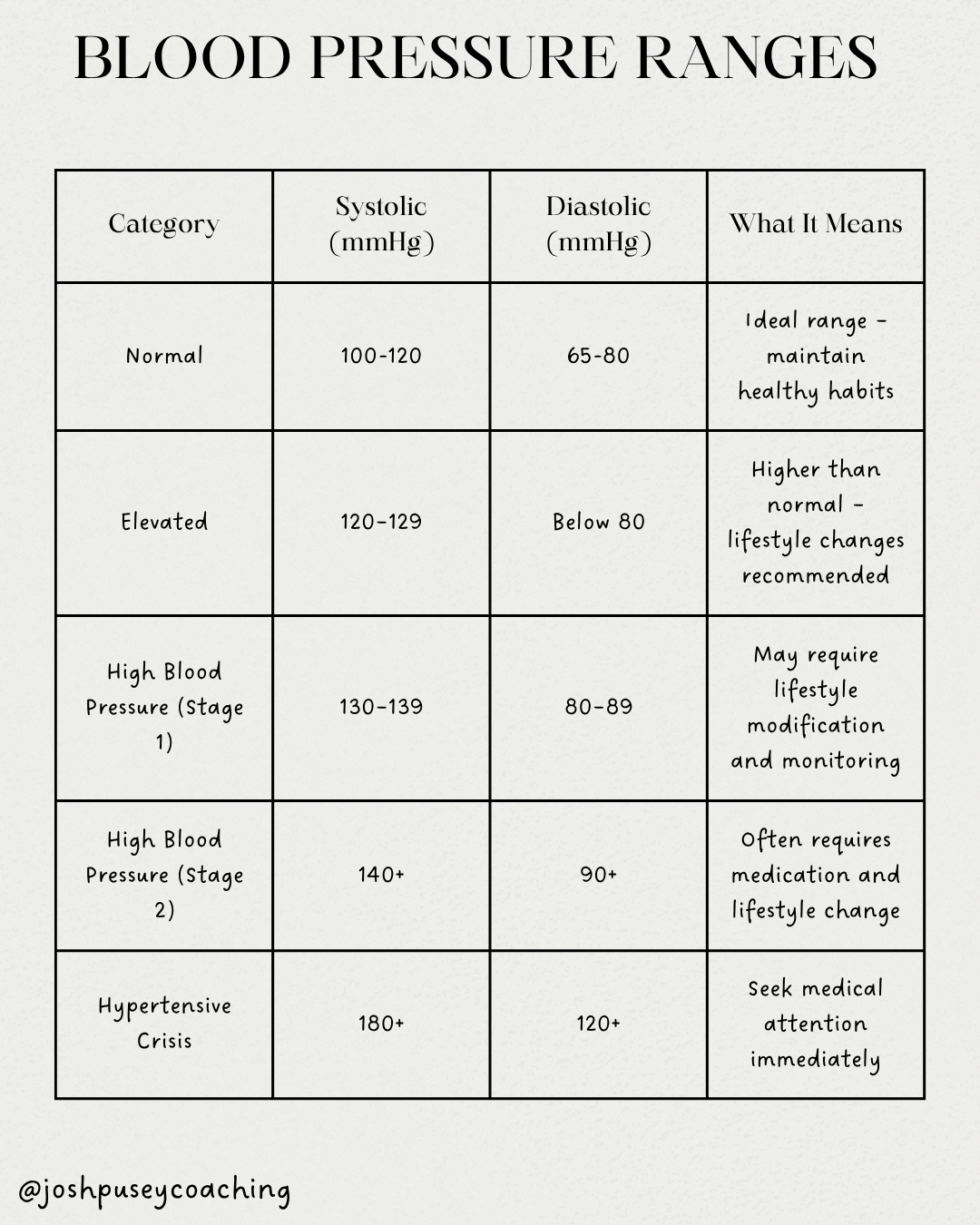Understanding Blood Pressure: What It Is, Why It Matters, and How to Manage It
What Is Blood Pressure?
Blood pressure is the force that circulating blood exerts against the walls of your arteries as your heart beats and relaxes.
It’s measured using two numbers:
Systolic blood pressure (SBP): The pressure when your heart contracts and pumps blood.
Diastolic blood pressure (DBP): The pressure when your heart relaxes and refills between beats.
Readings are expressed in millimetres of mercury (mmHg).
For example, 120/80 mmHg means a systolic pressure of 120 and a diastolic pressure of 80.
Why Is Blood Pressure Important?
Keeping blood pressure within a healthy range ensures that oxygen and nutrients are effectively delivered to your organs.
If blood pressure is too low (hypotension), blood may not reach the brain efficiently, causing dizziness or fainting.
If blood pressure is too high (hypertension), the constant strain damages artery walls, leading to narrowing, stiffness, and plaque buildup.
Chronic high blood pressure is the leading cause of cardiovascular disease, which contributes to over 10 million deaths globally every year (World Health Organization, 2023). It’s a major risk factor for heart attack, stroke, kidney disease, and dementia.
How Is Blood Pressure Measured?
Blood pressure is typically measured using a digital or manual sphygmomanometer (arm cuff).
It’s important that the cuff fits properly and that measurements are taken under consistent conditions.
Ideally:
After 5 minutes of rest
Sitting upright, back supported, feet flat on the floor
With the cuff at heart level
Avoiding caffeine, exercise, or smoking for at least 30 minutes beforehand
At the same time of day
Record the average of 3 resting recordings.
The “White Coat” Effect
Many people experience higher readings in clinical settings due to anxiety. This phenomenon is known as white-coat hypertension.
This can make it seem like your blood pressure is higher than it truly is.
Why Home Monitoring Helps
Using a home blood pressure monitor can provide a more accurate reflection of your typical blood pressure.
Taking readings at different times of day helps identify patterns and track progress over time.
💡 Tip: I often recommend the Omron range of automatic home monitors (validated by the British Hypertension Society) for their accuracy and ease of use.
Aim to record readings at the same time each day, and bring your log to appointments to help your clinician interpret trends.
What Affects Blood Pressure?
Non-Modifiable Factors
Age: Arteries become less elastic with age, naturally raising blood pressure.
Genetics: A family history of hypertension increases risk.
Sex: Men often develop high blood pressure earlier, while women’s risk rises post-menopause.
Ethnicity: Higher rates are seen in people of African or South Asian descent.
Modifiable Factors
Physical Inactivity: Regular exercise can reduce systolic blood pressure by 5–7 mmHg.
Diet: Reducing salt (<2,300 mg/day) and eating potassium-rich foods supports healthy blood pressure.
Weight: Each kilogram of weight loss can reduce systolic pressure by ~1 mmHg.
Stress: Chronic stress triggers hormones that raise blood pressure.
Alcohol and Smoking: Both elevate blood pressure and damage blood vessels.
Sleep: Poor sleep and conditions like sleep apnea increase risk.
How Exercise Helps Regulate Blood Pressure
As a Clinical Exercise Physiologist, I often help clients manage or prevent hypertension through tailored exercise programs.
Both aerobic exercise (e.g., walking, cycling, swimming) and resistance training (e.g., using weights or bands, bodyweight strength exercises) improve cardiovascular function and reduce blood pressure.
General exercise recommendations:
150 minutes of moderate-intensity aerobic activity per week, spread across 3–5 days
2–3 strength training sessions per week
Regular exercise strengthens the heart, improves vessel elasticity, and enhances your body’s ability to regulate stress hormones — all key for long-term blood pressure control.
Medications and Blood Pressure
For individuals with consistently high blood pressure, medication may be prescribed alongside lifestyle interventions. Common classes include:
ACE inhibitors (e.g., Ramipril) – relax blood vessels
Beta-blockers (e.g., Bisoprolol) – reduce heart rate and cardiac workload
Calcium channel blockers (e.g., Amlodipine) – relax arterial walls
Diuretics – reduce excess fluid volume in the blood
Potential Side Effect: Postural (Orthostatic) Hypotension
Some blood pressure medications can increase the likelihood of postural hypotension, a sudden drop in blood pressure when standing up from sitting or lying down.
This happens because the blood temporarily pools in the lower body, and the body’s compensatory response is slower, especially if blood pressure is already lowered by medication.
Symptoms include:
Lightheadedness or dizziness when standing
Blurred vision
Weakness or fainting
How to manage it:
Stand up slowly, especially after resting
Avoid sudden posture changes
Stay hydrated
Discuss symptoms with your GP or exercise physiologist — your medication or exercise plan may need adjusting
When Should You Check Your Blood Pressure?
Normal: Every 1–2 years
Elevated or risk factors present: Every 3–6 months
Diagnosed hypertension: As advised by your GP or healthcare provider
Home monitoring combined with clinical checks provides the most reliable overview.
Key Takeaway
Blood pressure is one of the most important indicators of your heart and vascular health — and it’s highly modifiable.
By combining structured exercise, nutrient-rich eating, stress management, and consistent monitoring, you can significantly reduce your risk of cardiovascular disease and improve your overall health.
If you’d like professional support to manage or lower your blood pressure safely and effectively, I can help design a personalised exercise and lifestyle plan tailored to your goals, medication status, and health needs.



